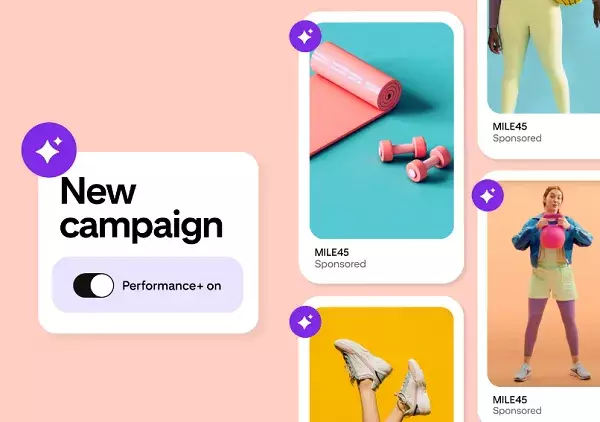In an era dominated by rapid technological advancements, social media platforms are not just keeping pace; they are innovating in ways that redefine digital marketing strategies. Pinterest, the visual discovery engine used by millions for everything from home décor inspiration to fashion design, recently announced the launch of Performance+, a suite inspired by Meta’s Advantage+ AI-powered campaigns. This initiative represents a significant evolution in how advertisers can leverage Pinterest’s capabilities to enhance their marketing efforts, suggesting a shift towards increased automation and personalization in ad campaigns.
Performance+ marks Pinterest’s commitment to harnessing artificial intelligence and machine learning to streamline the advertising process. It allows advertisers to automate nearly every facet of their campaigns—from targeting and budgeting to bidding and ad creation. By utilizing Pinterest’s vast data troves, the platform aims to provide automated solutions designed to optimize campaign performance and of course, drive more substantial engagement and conversions.
As explained in Pinterest’s announcement, this suite is available globally and supports varied advertising objectives, including Consideration, Conversions, and Catalog Sales. This broad applicability indicates an awareness of diverse advertising needs, recognizing that different advertisers operate with unique goals.
While the appeal of complete automation is evident, Pinterest seems to navigate the delicate balance between efficiency and control. Advertisers retain the option to dictate certain campaign elements while allowing automation to manage the more complicated aspects. The dual approach not only caters to advertisers who are cautious about relinquishing control but also aligns with emerging marketing philosophies that value data-driven decisions. Pinterest’s testing phases have shown promising results, with a notable improvement in metrics like cost per acquisition (CPA) and cost per click (CPC). Hence, there is a strong case for advertisers to consider relinquishing more control to the system, especially when the benefits are quantifiable.
However, this shift towards automation raises concerns. Some marketers may feel apprehensive about surrendering critical decisions to algorithms, fearing a potential disconnect between their brand ethos and automated ad placements. The onus is now on advertisers to find a balance that aligns their brand messaging with the inherent unpredictability of AI systems.
Pinterest is also expanding the capabilities of its Performance+ offering by incorporating a Return on Ad Spend (ROAS) bidding feature. This enhancement is particularly significant, as it allows qualified advertisers to optimize their campaigns for maximum value rather than volume. By focusing on ROAS, brands can tailor their advertising strategies to prioritize high-value customers, thereby ensuring that each marketing dollar is spent wisely and drives meaningful returns.
The introduction of enhanced targeting options is critical in making the advertising experience more pragmatic for brands. As shoppertainment rises in popularity—making social commerce an essential strategy—advertisers must engage customers in relevant moments. Pinterest’s approach of curating personalized promotions for users based on their searches and pins is a testament to the platform’s commitment to enhancing the user experience while supporting brand visibility and recognition.
With the holiday shopping rush on the horizon, Pinterest’s performance-driving strategies present lucrative opportunities for brands willing to adapt. The visual nature of Pinterest makes it an ideal platform for product discovery, and brands can take advantage of this moment. By utilizing the Deals ads modules, marketers can ensure that their promotions gain traction within the crowded marketplace, thereby enhancing their visibility during crucial shopping periods.
To successfully capitalize on this opportunity, brands must register their promotions through Pinterest, bridging the gap between user intent and advertisement visibility. This proactive engagement can significantly boost their chances of standing out during the peak shopping season.
The launch of Pinterest’s Performance+ represents a pivot towards a more automated, data-driven future in digital advertising. While bringing forth opportunities for optimization and effective targeting, it also challenges advertisers to adapt to a landscape where algorithms increasingly dictate marketing strategies. As brands explore the capabilities of Performance+, the ultimate test will be merging technology’s efficiency with the nuanced understanding of human connection that only brands can provide.

